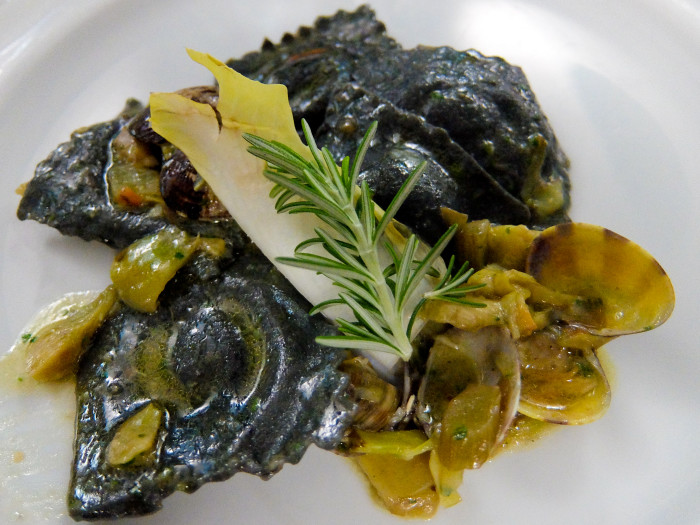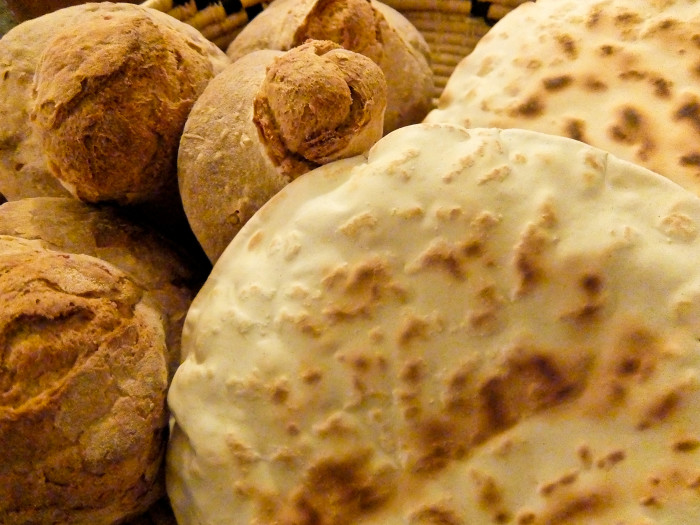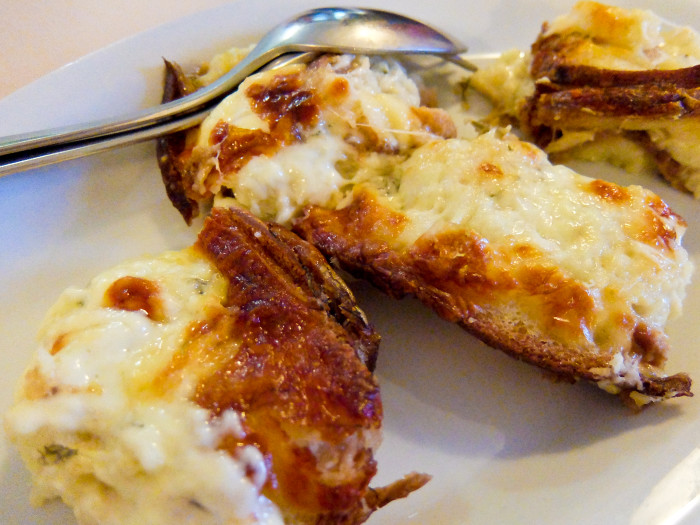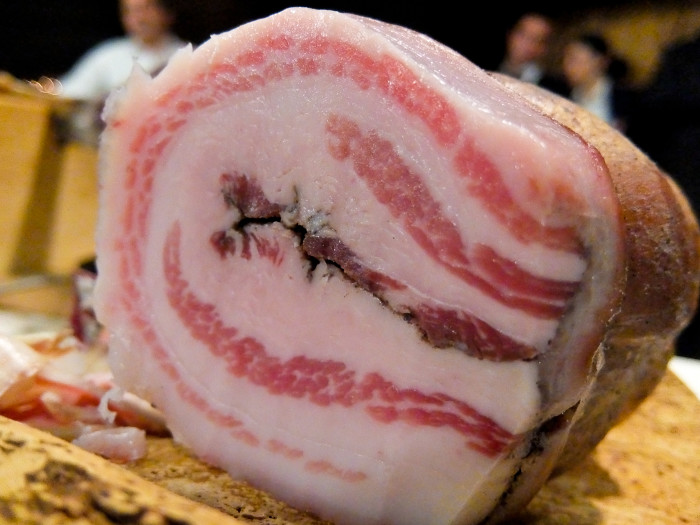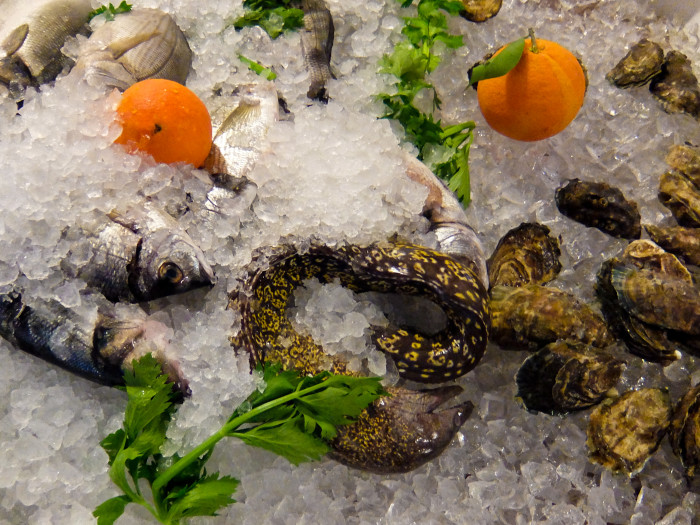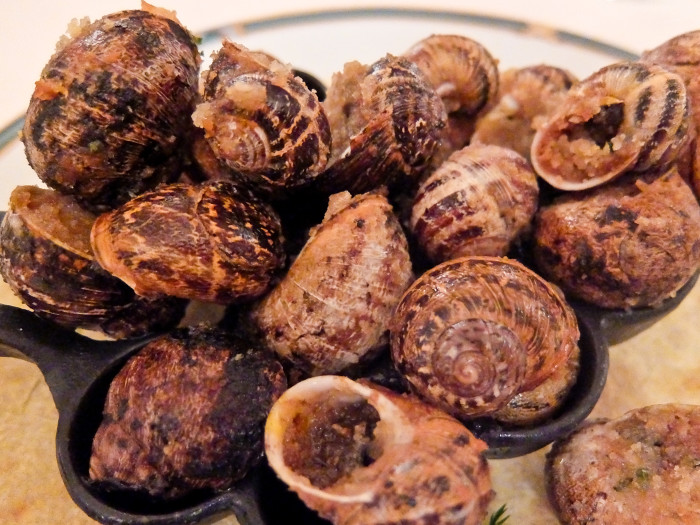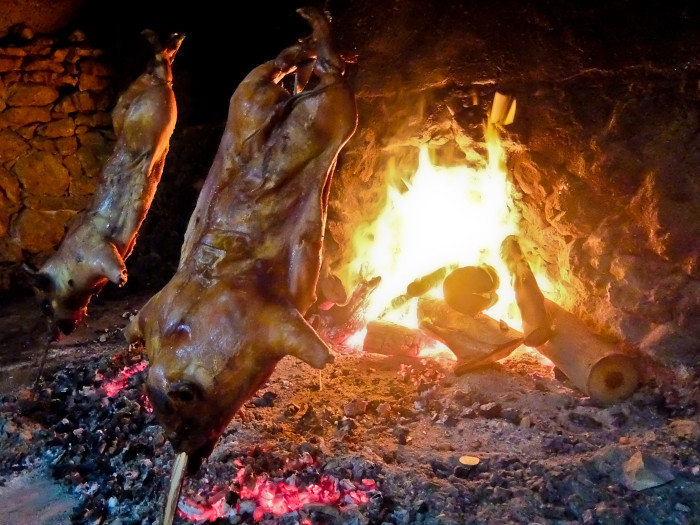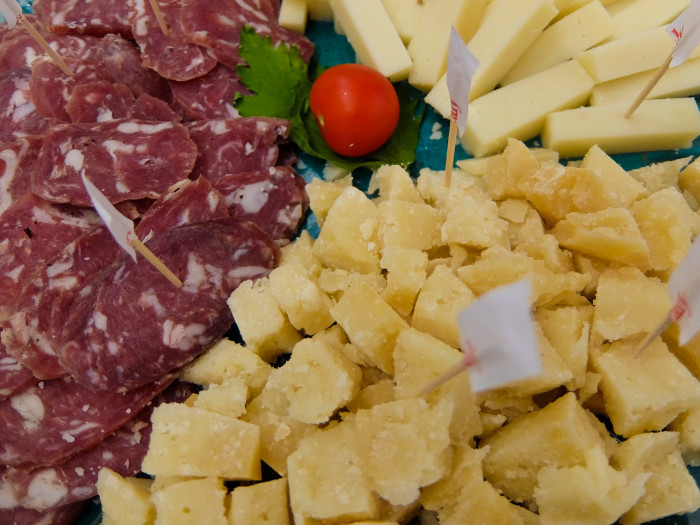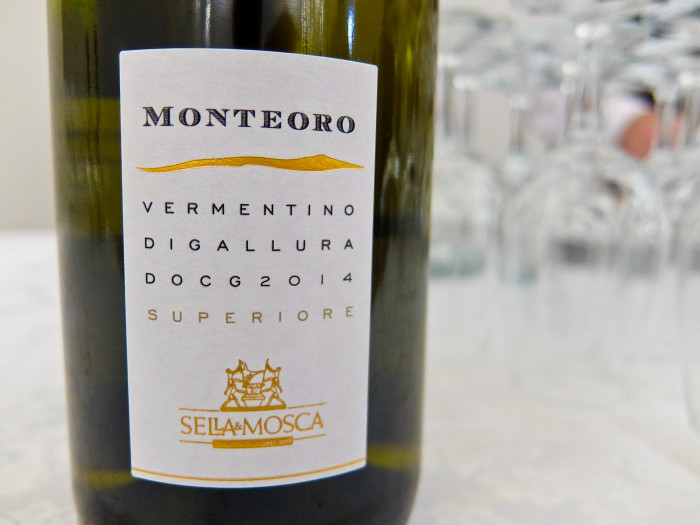Where And What To Eat In Sardinia, Italy
Anywhere that makes a sheep's milk cheese deliberately containing thousands of live maggots is enough to make me hop on a plane in the hope of a tasting. Unfortunately, casu marzu or formaggio marcio, literally "rotten cheese" in Italian, has been outlawed by the hygiene police, and the only way to get it is to complete a black-market deal with a Sardinian shepherd.
I didn't have the time but my disappointment was tempered by the discovery that the island has a distinctive cuisine: Italian, yes, but influenced by the invaders who came and went. Traces of the oldest of these, the mysterious Nuraghic people, can still be seen in the area's tall towers, built around 1600 B.C., but it's the Phoenicians, Carthaginians, Romans, Arabs and Spanish who've left their marks on the food. Indeed, Sardinia didn't become part of Italy until 1861, so the island had more than 2,500 years to absorb these hybrid influences.
At 170 miles long and 75 miles wide, Sardinia is the second-largest Mediterranean island after Sicily, and there are more than 3 million sheep — two for every human. As you'd expect on such a large island, each region has its specialties; I spent time in the city of Sassari in the northwest. Sassaresian cuisine is distinctive for its lumache (snails), moscardini (small spiced octopus) and vegetables like mirinzana (eggplant), faba (broad beans) and carciofi (spiny artichokes). Pecorino sheep's cheese is produced everywhere, and fresh ricotta is made from the whey, whilst the curds are moulded into pecorino romana. This region also contains the Sella & Mosca winery, the largest in Europe, with 1,440 acres of local grapes including Vermentino for white wine and Cannonau for red.
Pasta
Ravioli with cuttlefish ink, stuffed with shrimp and accompanied by clams[/caption]
Most regions in the Italian mainland favor their own particular type of pasta, and Sardinia is no different. The North African influence is obvious in fregula — it's like a large-grained couscous and is made from coarsely ground semolina. You find it in soups but it can also serve as a base for conventional pasta sauces. Without doubt, though, it's best when it's cooked in a seafood broth with fresh clams and mussels, like at Trattoria L'Assassino in Sassari.
Malloreddus is a small, oblong, grooved Sardinian pasta similar to gnocchi and is also known as gnocchetti sardi, again made of semolina flour with a pinch of saffron. Typically, it is prepared with a tomato and sausage sauce, topped with grated aged pecorino. Another variation is with cherry tomatoes, salted fresh ricotta and flat-leaf parsley.
Standard Italian pasta is also on the menu, and I enjoyed some ravioli made with cuttlefish ink, stuffed with shrimp and accompanied by clams at La Risacca in Sorso.
Bread
The most typical of the island's 400-plus breads is pane carasau, a circular flatbread.[/caption]
There are about 400 types of Sardinian breads, coming from different regions, although I only got to try a couple. The most typical is pane carasau, which is a circular, thin, crisp flatbread. Apparently designed for shepherds to take with them when they tended their flocks, it can last for a year and is often served just with extra-virgin olive oil and salt. It becomes pane frattau when it's soaked in lamb stock and spread with tomato paste and grated pecorino cheese before being topped with a semi-coddled egg and rolled into a thin cigar. It's made right in front of you at Ristorante Li Lioni, which has a menu entirely devoted to bread.
Zuppa gallurese is made from pane civraxiu soaked in lamb stock and topped with cheeses.[/caption]
Pane civraxiu is a large country loaf often cooked in wood-fired ovens. The Sardinians have come up with a wonderful way to revive it when it starts to go stale: zuppa gallurese, which has nothing to do with soup. Slices are soaked in lamb stock, sprinkled with pecorino cheese and fresh herbs, layered in a shallow dish, and topped with slices of cheese before more stock is added. It's baked in the oven until the cheese has browned and comes out like a cross between lasagne and cheese on toast — perfect for hungry shepherds.
Charcuterie
The traditional lonza is a type of salumi made from whole pork loin.[/caption]
As well as standard Italian cured pork charcuterie like pancetta, prosciutto and lonza, salsiccia sarda (Sardinian sausage) is a cross between salami and sausage. It's usually a combination of lean and fat pork seasoned with fennel, anise and pepper and stuffed into intestines that have been dipped in wine or vinegar. The ends are tied together to form a horseshoe. The tastiest salsiccia sarda are rustic versions made from wild boar and smoked over myrtle. There's also a lamb sausage, mixed with a little beef, and a very smelly goat sausage that is not for the faint-hearted.
Fish
Impressive displays of seafood are commonplace in Sardinia.[/caption]
With Sardinia being an island, fish is a staple, and Alghero is famous for its lobster, although it was out of season when I visited. The distinctive fishy ingredient is bottarga, tuna or grey mullet roe, sun-dried then salted and pressed. Mullet bottarga is light orange when it's cut, with a delicate flavor, whereas the variety made from tuna is darker and stronger. Both can be grated or sliced, but never cooked. Rather, they are served as a starter on toasted bread, or atop sliced artichokes. It also goes well with pasta, mixed with lemon and olive oil and added at the end of cooking. If you like anchovies, then you'll like this.
Meat
Even though there are more than 3 million sheep on the island, inhabitants seem to waste no part of the animal. A popular dish is lamb's feet in tomato sauce, although I must say I find it way too fatty. Easier to eat are chunks of lamb on the bone, cooked with artichokes and olives. At Trattoria La Vela Latina in Sassari, lamb liver is served with olives, and it's delicious.
Lumache consists of boiled snails that are stuffed back in their shells with a mix of ingredients.[/caption]
Another specialty of this restaurant is lumache — snails collected locally, boiled and then stuffed back in their shells with a mixture of grated pecorino, chopped garlic, bread crumbs, white wine and chopped parsley. The taste of these wild snails is a million miles away from the farmed version, and you can only get them in Sassari.
Perhaps the most traditional Sardinian dish is porceddu — suckling pig spit-roasted for hours.[/caption]
Some would say that the culmination of traditional Sardinian cuisine is the famous porceddu — suckling pig wrapped in myrtle and bay leaves and spit-roasted for several hours in front of an open fire made from aromatic woods, like juniper or olive. I got to sample this at Agriturismo Sa Mandra, just outside Alghero, and the meat just fell off the bone, dripping with aromatic fat, the myrtle and bay giving a glorious depth to the flavor.
Cheese
Cheeses (pecorino pictured here) are Sardinia's major export.[/caption]
Cheeses are the island's major export, made from both goat and sheep, and they include capra sarda, fiore sardo DOP, pecorino romano DOP, brigante and the now-banned casu marzu, probably smuggled out in Italian suitcases. I particularly like the various types of ricotta, which are either served completely fresh — ricotta fresca — or left to mature for 20 days and then known as ricotta stagionata. It's particularly good with pasta, or you can just eat it on its own.
Wine
This crisp, pale Monteoro white wine from Sella & Mosca vineyards has a floral bouquet.[/caption]
Sella & Mosca in Alghero was founded in 1899 with just 37 acres but now runs to 1,440. The producers have vineyards all over the island, with one of their best white wines, Monteoro, coming from Vermentino di Gallura grapes grown on the chalky soils of the Northeast. This crisp, pale yellow wine has a floral bouquet with traces of acacia and fresh grass cuttings. There's also a rather good sparkling wine, Torbato Brut, made from grapes of the same name, which originated in Catalonia in Spain. The distinctive red Riserva is made from the Cannonau grape, which also probably originated in Seville, Spain. It spends two years in oak and has a deep ruby red color, slightly peppery with a full body. Cannonau goes well with the strong tastes of Sardinian pecorinos such as fiore sardo or pecorino romano. The winery runs guided tours with tastings every day at 5:30 p.m. and other times by appointment.
A method I've never come across before is that used by Cantina Santa Maria La Palma. Bottles of Akenta, a sparkling wine from Vermentino di Sardegna, are aged 100 feet under the sea for six months. Apparently, the higher pressure on the seabed adds some extra fizz, and it certainly tastes good — ideal for deep-sea divers passing by.
Restaurants
Trattoria La Vela Latina, Sassari.
Traditional dishes including local snails and lamb's feet or try its taccone pasta with tomatoes and fresh ricotta.
Trattoria L'Assassino, Sassari.
Traditional dishes including fregula with seafood.
La Risacca, Sorso.
Good for excellent fish, including Sardinian oysters.
Agriturismo Sa Mandra, just outside Alghero.
Excellent charcuterie and homemade ricotta, but its triumph is the nine-hour roasted suckling pig.


